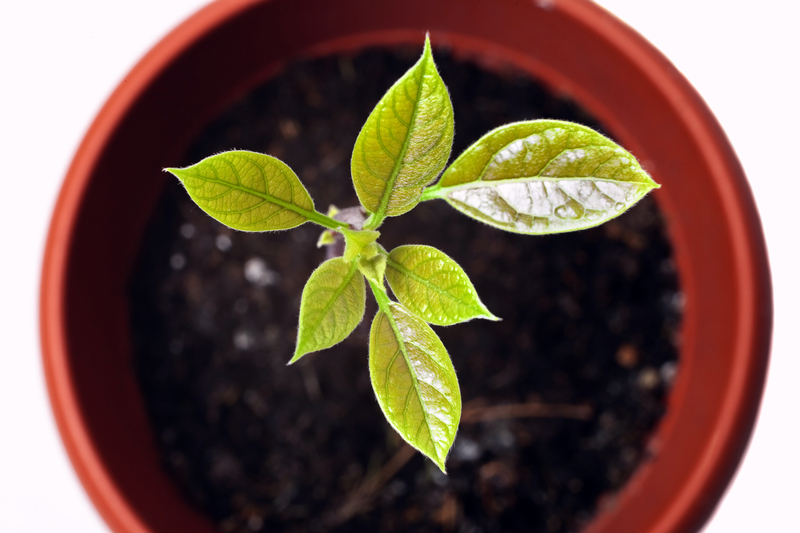How to Prepare Your Lawn for a Hot, Dry Summer
Preparing your lawn for the challenges of a hot, dry summer is essential if you want to maintain a lush, green, and healthy turf. Intense heat and prolonged drought can stress grass, create bare patches, and invite weeds and pests. In this comprehensive guide, we'll dive into the most effective strategies for getting your lawn summer-ready, with actionable tips to boost its resilience and keep your outdoor space looking vibrant all season long.
Why Summer Lawn Preparation Matters
The transition from spring to summer brings an increase in temperatures and often a reduction in rainfall. These factors put considerable strain on your grass by:
- Slowing or halting growth
- Causing the lawn to turn brown and go dormant
- Encouraging weed infestation
- Making grass more susceptible to pests and disease
Preparing for hot weather ensures your yard is equipped to thrive, even under adverse conditions, preserves curb appeal, and saves time and resources in the long run.

Assess Your Lawn's Condition
Start by examining your turf's current health. Walk your yard, look for compacted soil, dead spots, excessive thatch, bare patches, or signs of weed and pest invasions. Healthy, well-established lawns can endure summer extremes much better than struggling ones.
Test the Soil
Soil testing reveals pH imbalances or nutrient shortages which can impact water absorption and grass health. You can pick up a DIY test kit or send a sample to a local extension service. Aim for:
- pH 6.0-7.0 (slightly acidic to neutral) for most turfgrasses.
- Essential nutrients: Nitrogen, phosphorus, potassium, and trace minerals.
Amend your soil as needed in early spring to support robust root development ahead of summer.
Choosing the Right Grass Type
If you are establishing a new lawn or overseeding, select drought-tolerant grass species. Warm-season grasses such as Bermuda, Zoysia, St. Augustine, and Buffalo grass have evolved to thrive in hot climates and need less water than cool-season varieties like Kentucky Bluegrass or Fescue. Matching your grass to your climate zone is one of the most effective strategies for preparing lawns for hot summers.
Core Aerate to Relieve Compaction
Thick, compacted soils restrict root growth and water infiltration. Core aerating your lawn, ideally in spring or early summer, allows air, water, and nutrients to penetrate deeper. This process improves:
- Drought tolerance
- Root growth for stronger, deeper systems
- Overall water uptake, especially during dry weather
You can rent a mechanical aerator or hire a lawn care service. Aim to leave the core plugs in place--they'll break down naturally and boost soil quality.
Overseed Thin Areas
Before the hot, dry weather arrives, overseed bare and thinning patches with high-quality, drought-resistant seed. Prepare the soil by raking to expose dirt, broadcast the seed, and lightly cover it with topsoil or compost. Consistent moisture in the first 2-3 weeks helps establish new grass before summer stress hits.
Thatch Removal for Water Penetration
Excessive thatch--a spongy layer of undecomposed organic matter above the soil--blocks water and nutrients from reaching roots. If your lawn has more than 1/2 inch of thatch, remove it with a dethatching rake or machine. Healthy, dethatched lawns absorb water more efficiently and withstand drought better.
How to Water Your Lawn for Maximum Drought Resistance
Watering practices can make or break your lawn's survival in a hot, dry summer. Follow these expert guidelines:
Irrigate Deeply and Infrequently
- Water early in the morning (before 9 AM) to reduce evaporation and fungal risk
- Apply 0.5-1 inch of water at a time to encourage roots to grow downward
- Avoid shallow, daily watering; it keeps roots near the surface where heat dries soil rapidly
Utilize Smart Irrigation & Water-Saving Tools
- Install smart controllers or rain sensors to optimize watering schedules
- Consider drip irrigation or soaker hoses to deliver moisture directly to roots
Adjust your watering frequency if local regulations place restrictions during drought events--shorter, deeper cycles help lawns survive mandatory cutbacks.
Feed Your Lawn: Summer Fertilizing Tips
Proper nutrition keeps grass vigorous when weather is harsh. However, avoid heavy fertilizing once summer's heat sets in, as lush new growth is more susceptible to stress. Instead:
- Apply a slow-release fertilizer with potassium in late spring or early summer to promote root strength
- Use organic compost to add nutrients and improve water-holding capacity
If you must fertilize during extreme heat, water thoroughly before and after to prevent burning your lawn.
Mowing Strategies for Hot, Dry Weather
How you mow greatly affects your lawn's summer resilience. Follow these guidelines for mowing during hot spells:
Keep Blades Sharp
Dull blades tear grass, making it more prone to disease and drought stress. Sharpen mower blades every 20 hours of use for a clean cut.
Raise the Mower Deck
- Set the mowing height to the upper range for your grass type--2.5-4 inches is ideal for most species
- Taller grass shades the soil, reduces water loss, and encourages deeper roots
- Never remove more than one-third of the grass blade at a time
Leave Clippings on the Lawn
Grass clippings from mowing act as natural mulch. They break down quickly, returning nutrients and helping the soil retain moisture throughout the summer.
Mulching for Moisture Retention
Mulch garden bed edges and landscape borders near your lawn to prevent water evaporation and cool the soil. You can use:
- Shredded bark
- Compost
- Leaves or grass clippings
Keeping the edges moist helps grass roots access extra moisture and creates a buffer against dry weather.
Weed and Pest Control in Summer
Uncontrolled weeds compete with your lawn for moisture and nutrients, especially during drought. Remove weeds by hand or use selective herbicides in spring and early summer, well before the peak heat. Spot treat troublesome areas to avoid harming the grass during stressful periods.
Monitor for pests such as chinch bugs and grubs. Signs like yellow patches, wilting despite adequate water, or birds picking at the turf can indicate an issue. Opt for eco-friendly pesticides where possible and only when necessary--chemical burns are harder for lawns to recover from when it's hot.
Establish a Summer Maintenance Routine
A consistent, gentle approach is best during the hottest months. Adapt your lawn care habits as follows:
- Reduce foot and pet traffic to avoid soil compaction and grass stress
- Sharpen mower blades and clean yard equipment regularly
- Inspect for early signs of stress (wilting, color change) and adjust maintenance accordingly
- Avoid aggressive treatments like de-thatching or heavy fertilization in peak summer
Consider Lawn Alternatives or Renovations
If your region regularly faces prolonged drought and water bans, explore switching to eco-friendly options like:
- Groundcovers such as clover or sedum
- Artificial turf for low-maintenance spaces
- Xeriscaping--landscaping designed for minimal water use
Incorporating native, drought-adapted plants alongside a smaller grass area can save water while maintaining beauty and function.
Signs of Heat-Stressed Lawns & How to Respond
It's normal for cool-season lawns to go dormant (turn brown) when temperatures soar. Resist the urge to overwater or overfertilize. Instead, employ these rescue tips:
- Water deeply in the early morning if no rain falls for more than a week
- Avoid mowing during heatwaves--wait until conditions improve
- Limit activity on dormant grass to prevent long-term damage
Frequently Asked Questions: Summer Lawn Care
1. How often should I water my lawn in a hot, dry summer?
Once or twice per week is ideal, if allowed by local guidelines. Water deeply, ensuring the soil is moist 6-8 inches below the surface to encourage drought resistance.
2. Will fertilizing help my lawn survive the heat?
Use caution with high-nitrogen fertilizers in midsummer. Instead, favor slow-release or organic products applied in spring or early summer to bolster root health before the heat arrives.
3. Should I mow less often in hot weather?
Yes. Mowing less frequently (and at a higher mowing height) reduces stress and helps your grass conserve moisture. Never cut more than one-third of the grass blade at a time.
4. My lawn turned brown. Is it dead?
Not necessarily. Dormancy is a natural protective mechanism for many grasses. With proper watering and care, most lawns recover when cooler, wetter weather returns.

Summary: Best Practices for Preparing Lawns for Hot, Dry Summers
- Test and amend your soil in spring
- Choose drought-tolerant grasses for your region
- Core aerate, dethatch, and overseed thin spots early
- Water deeply and less frequently, using smart irrigation tools
- Apply slow-release fertilizer before summer heat peaks
- Raise mowing heights and leave clippings as mulch
- Mulch flower beds and edges to conserve moisture
- Stay vigilant for stress, weeds, and pests
- Reduce lawn traffic and aggressive treatments during extreme heat
Conclusion: Keep Your Lawn Green and Resilient All Summer
With the right summer lawn preparation, it's possible to enjoy a strong, green, and healthy yard even during periods of heat and drought. By focusing on soil health, proper watering, smart mowing, and sustainable landscaping, you ensure that your lawn stays vibrant and beautiful, saving water and reducing the need for costly repairs or replacements.
If you apply these expert tips, your outdoor space will not only survive but thrive--whatever the weather throws your way. Start your hot, dry summer lawn readiness plan today and watch your yard flourish all season long!